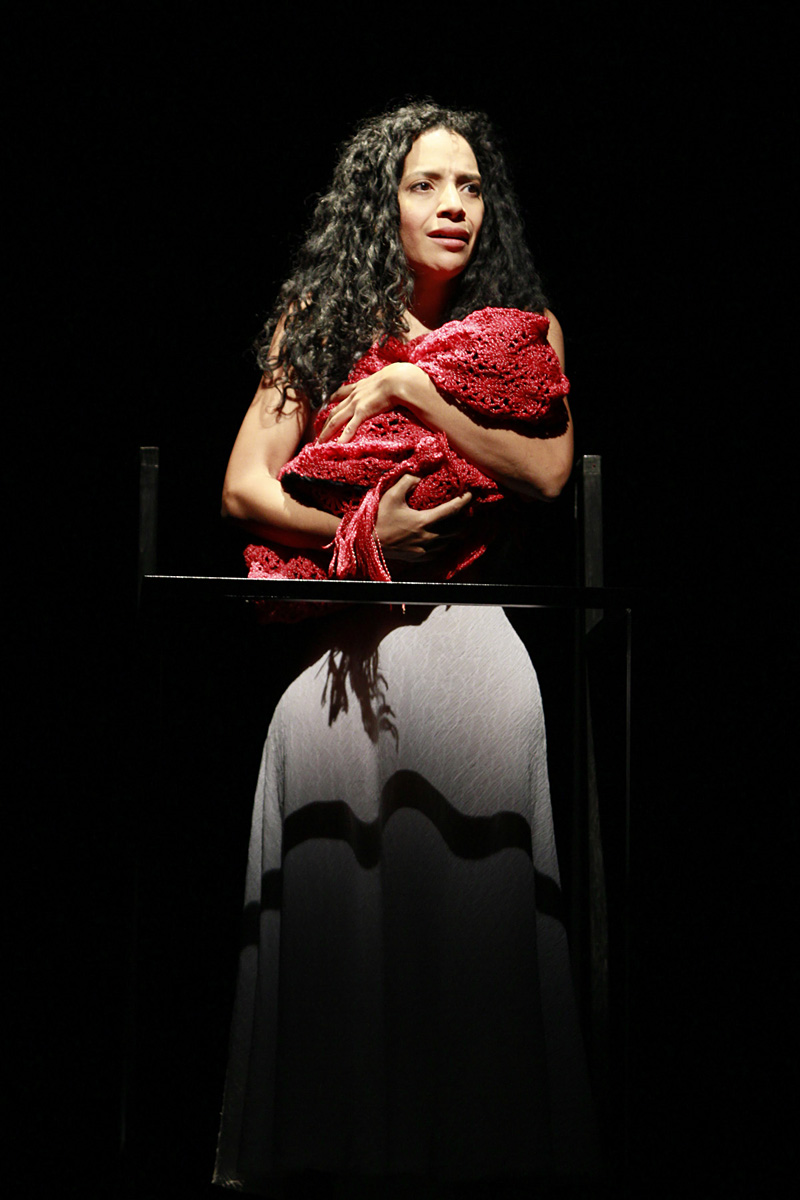From Stephen King to Harry Potter, there’s little mystery as to why literary adaptations are so popular in Hollywood and onstage: It’s easier to grab an audience for something people might dimly remember reading, if only in school. Sometimes the calculation works, as with Book-It’s successful recent two-part The Cider House Rules, and sometimes it doesn’t.
Certainly, The Scarlet Letter has been adapted many, many times before. (In fact, the screen comedy Easy A just came out in September.) Unplanned pregnancy is of course a perennial topic. And like Cider House, this world-premiere adaptation of Nathaniel Hawthorne’s 1850 novel looks at personal conviction in a coercive (literally and/or figuratively Puritan) society. Here, Hester Prynne (the beautiful Zabryna Guevara) has given birth out of wedlock in colonial-era Boston. While wearing an “A” for adultery sewn onto her dress, she shields the identity of her gutless and hypocritical lover, the Reverend Arthur Dimmesdale (Frank Boyd), who knocked her up. (Am I the only one reminded of former Senator John Edwards and Rielle Hunter?)
Hester’s daughter Pearl, in her pugnaciously slouchy grown-up incarnation (Renata Friedman), becomes the narrator of her disgraced mother’s tale. Moreover, in this adaptation by San Diego playwright Naomi Iizuka, adult Pearl also has a child of her own. She sees in her daughter glimmers of Hester, from whom she has long been estranged. Grown Pearl wants to understand her own origins and what she witnessed at age 7, so she plunges into an investigation of the past, replete with flashbacks (in which little Pearl is played by the adorable Izabel Mar), remembered conversations, imagined scenes, a seizure, and sleuthy epiphanies.
The men don’t matter much in this telling. Under the direction of Lear deBessonet, this Scarlet Letter redeems no male character—which makes it feel like a hopeless grind of feminine oppression. Was that the goal? Intiman artistic director Kate Whoriskey writes in her program notes that her brief to Iizuka was to “underscore the authenticity of Ruined [Whoriskey’s earlier Intiman hit about prostitutes in the Congo] as a universal experience, and address the thorny, complicated, often problematic history of women in America.”
It’s all on the same spectrum, you see: sex workers in the Congo and the sexual oppression of the Puritan patriarchy. Yet in the more nuanced Ruined, at least one man proved a mensch and redeemed his gender with a beautiful, broken dance. Scarlet Letter‘s protagonists, both male and female, just evaporate at the end. That’s partly Hawthorne’s fault, of course, but there’s no law requiring adaptations to replicate the original. One might hope that part of the rationale for adaptation is innovation.
Unfortunately Iizuka’s new monologues for Hester sound like bad Harlequin romances. Thus “A tingling inside of me, a queasy and delicious sensation, as if someone had reached inside of me and touched me in places I had no words for.” Adult Pearl’s new lines aren’t much better, as when she stumbles across a familiar assignation spot in the woods: “Something happened here, in this place. You met someone here, a man. I saw, I was there.”
Ultimately, the whole dramatic contraption fails to take wing. Hester and both Pearls generate sympathy, but how hard is that? Even a pro like R. Hamilton Wright, as Hester’s long-lost husband Dr. Chillingworth, can’t help such stilted, disjoined, predictable writing. He’s left telling the ailing Dimmesdale “But there is something inside you, I sense it. Something that drains the life force from you, that gnaws at you from within . . . ” That pretty well describes the effect this play had on me, only without the perk of the offending affair.








